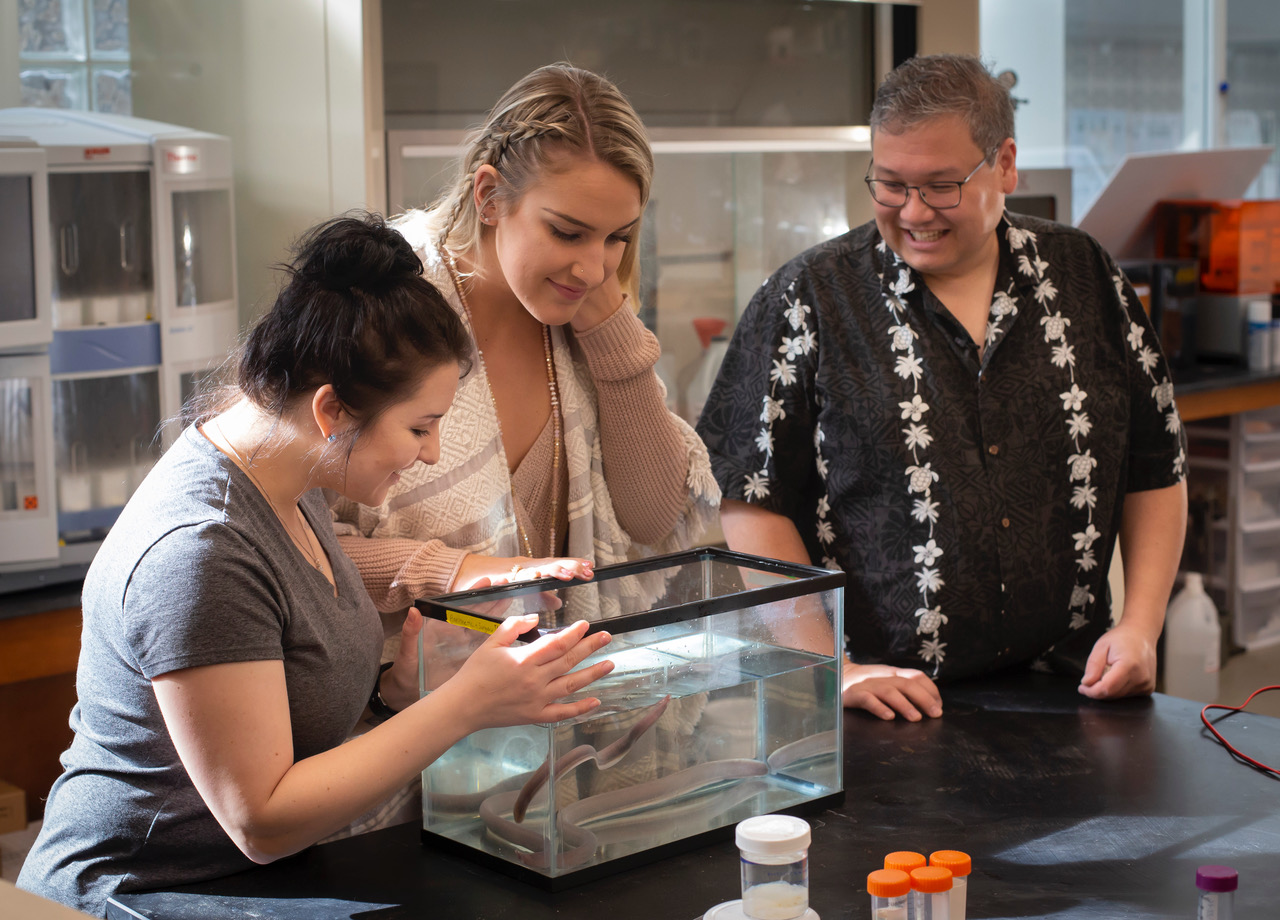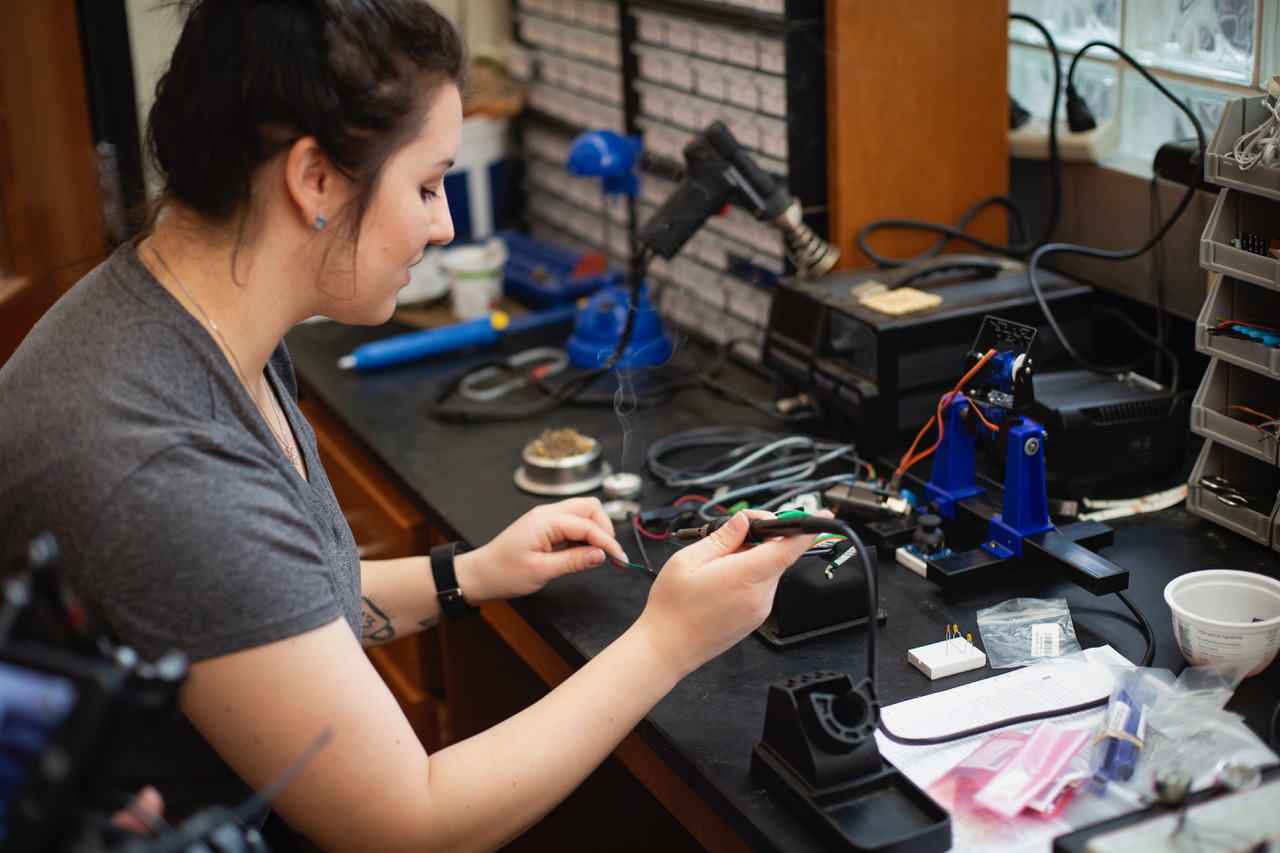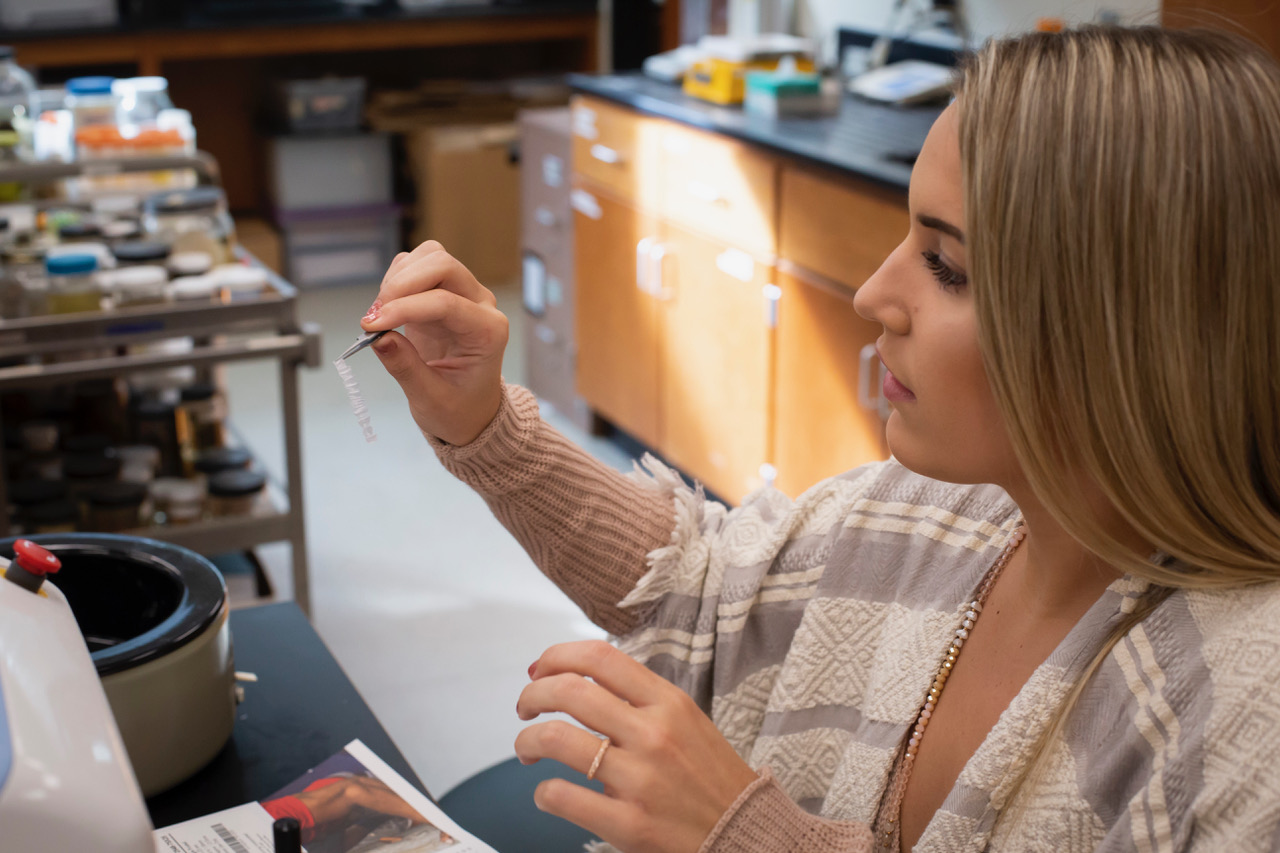
#VState biomechanics professor Dr. Ted Uyeno’s passion for all things mysterious has led him to make a career out of chasing wonders in the deep and bringing his student researchers with him on his journey to discover the unknown. Through his research on deep-sea creatures, he is able to envision and, in some cases, actually develop practical, cutting-edge tech, like a diabetes implant based on a squid heart or a self-tying rope based on an aquatic worm. Adrienne Womble and Lindsey Robinson are student researchers who assist Dr. Uyeno in his lab.
Here is what they had to say about their experience working in Dr. Uyeno’s the lab.
________________________________________________________________________________________________________________
Adrienne’s Experience
Q: What is your role in the research lab?
A: I’m sort of a jack of all trades in the lab. As the aquatics manager, I care for the hagfish (deep-sea worms) and maintain the tank systems. This includes checking the health of the animals and the water condition of the tanks. Most recently I have been looking at the structure and function of the hagfish gills using histological techniques. This includes dissection and preparation of tissue samples to view under the microscope. I am also working on an on-going microscope refurbishing project. The goal of the project is to replace the current light bulbs with LEDs and have the microscope run off battery power instead of electrical outlets.
Q: What has been the most intriguing project that you’ve worked on?
A: My first hagfish dissection was my most intriguing project! Prior to working in the lab, the only thing I knew about hagfish was that they were slimy. I had steadily been learning about their behavior, habitat, and morphology. My first dissection was so fascinating because what I had been learning, I could finally see it with my own eyes, and it felt like everything I had been working toward came full circle.

Q: Why is the research you are doing significant?
A: The research I am doing is significant for many reasons. Understanding the morphology of hagfish can lead to advances in technology. For example, if we can understand and replicate hagfish tying themselves in knots or sliming, this could be applied to improved textiles. Histology skills are important because they aid in understanding anatomy and physiology in research and are used to make diagnoses in healthcare. Refurbishing and repairing scientific equipment, such as a microscope, is important for reducing, reusing, recycling.
Q: What makes you want to squeeze undergraduate research into your busy schedule?
A: With my undergraduate research, I feel I am learning skills that will not only make me more competitive for graduate schools or jobs in my future, but I am also gaining skills that are valuable in day-to-day life. I feel I am not only becoming a better student and a more well-rounded person thanks to Dr. Uyeno.
Q: What has it been like to work alongside Dr. Uyeno?
A: Working with Dr. Uyeno has been a fascinating and rewarding experience because each day is different and the lab equipment and resources are so diverse. Dr. Uyeno is a great mentor, and I feel I learn something new about him or from him almost every day, which is my favorite part.
Lindsey’s Experience
Q: What is your role in the research lab?
A: I studied histological technique and used rat tissue as my specimen to provide beginner level microscope slides to students in middle and high schools in Valdosta.
 Q: What has been the most intriguing project that you’ve worked on?
Q: What has been the most intriguing project that you’ve worked on?
A: The most intriguing project that I worked on with Dr. Uyeno was dissecting the different tissues out of the mice that I used for my research. He taught me so many cool things about dissecting, and his knowledge of anatomy is so fascinating to me.
Q: Why is the research you are doing significant?
A: This research project was significant because many hunters in South Georgia throw away what they do not eat, but these animals can be used to teach students by making slides of the tissues. There are plenty of schools that don’t have the funds and resources to teach their student about tissues in the body in a hands-on way because they don’t have these types of microscopic slides.
Q: What is it that makes you want to squeeze undergraduate research into your busy schedule?
A: I have always heard that research is important, but I never knew how much more I would learn and love biology until I worked in Uyeno’s Biomechanics Lab. The one-on-one training and hands-on experience is incredible. I feel like no matter how busy I am, I always want to make time for Dr. Uyeno and Adrienne because I consider them my lab family and they are always teaching me something new or just there to brighten my day.
Q: Will this experience play a role in shaping your future? If so, how?
A: Yes, there are so many opportunities that can come out of my research project. I am very familiar with histology now, so I would feel very comfortable going into a lab or clinic as a histologist. Specifically, for my future, any type of hands-on experiences and research opportunities are important because they are necessary for me to get accepted into medical school.
________________________________________________________________________________________________________________
Dive in and learn more about the work Dr. Uyeno is doing in his #VState biomechanics lab!